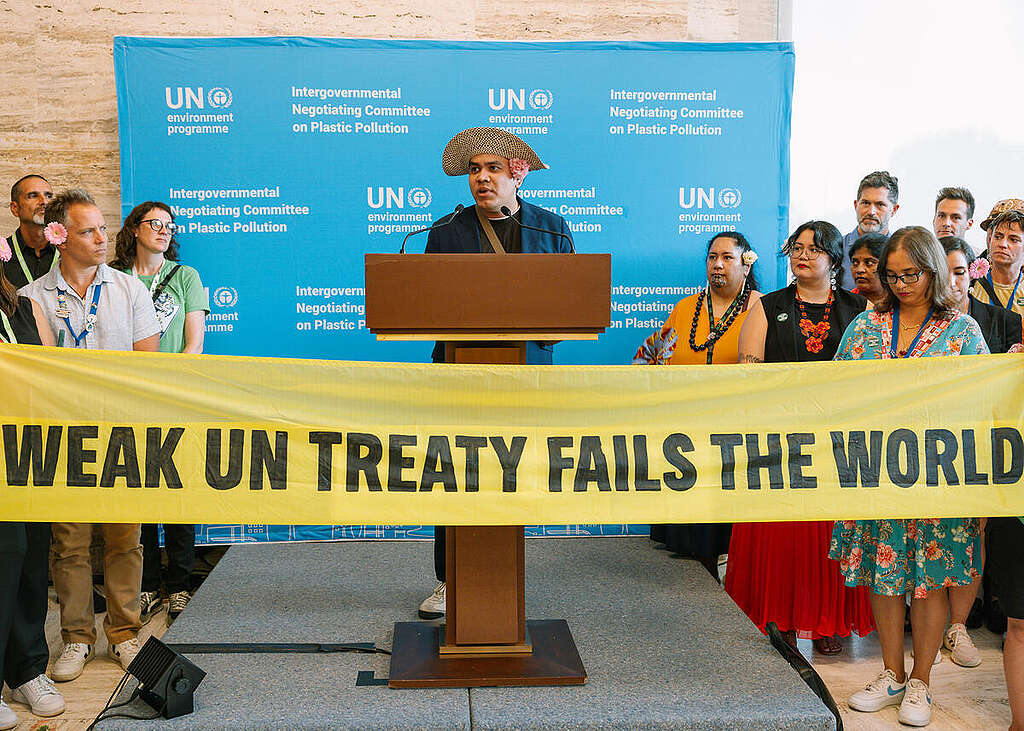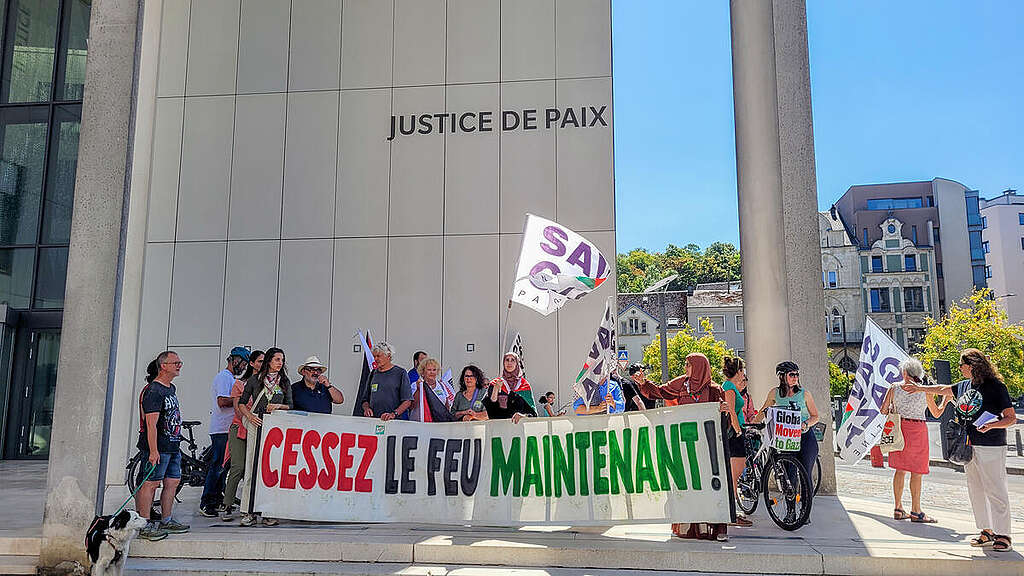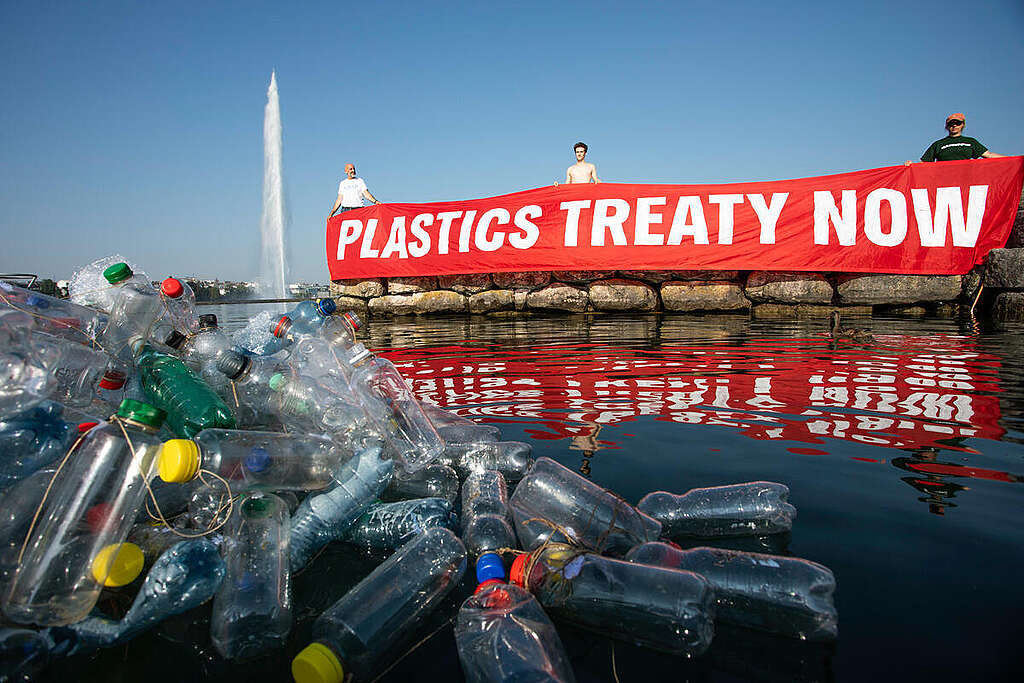From a banner protest at the plastic treaty in Switzerland to a giant installation on a Shell platform in the North Sea, here are a few of our favourite images from Greenpeace's work around the world this week.
 England – Greenpeace UK's climbers install a major new work by renowned artist Anish Kapoor titled BUTCHERED onto a Shell platform in the North Sea – the world's first artwork to be installed at an active offshore gas site.
England – Greenpeace UK's climbers install a major new work by renowned artist Anish Kapoor titled BUTCHERED onto a Shell platform in the North Sea – the world's first artwork to be installed at an active offshore gas site.
After securing a giant 12m x 8m canvas to one side of the structure, the activists hoisted a high-pressure hose on top of the canvas at a height of 16 metres above the sea. They then pumped 1,000 litres of blood-red liquid that gushed into the fabric, creating a vast crimson stain.
The work starkly visualises the wound inflicted on humanity and the Earth by the fossil fuel industry. It is evocative of our collective grief and pain at what has been lost, but also a cry for reparation.

 Switzerland – Juan Carlos Monterrey Gómez, Special Representative for Climate Change, Panama, speaks at a press conference ahead of the final INC-5.2 Negotiation plenary Session, warning negotiators that a weak treaty will fail the world.
Switzerland – Juan Carlos Monterrey Gómez, Special Representative for Climate Change, Panama, speaks at a press conference ahead of the final INC-5.2 Negotiation plenary Session, warning negotiators that a weak treaty will fail the world.
Member States, Civil Society, Rights Holders, and Scientists held a press conference ahead of the final INC-5.2 Negotiation plenary Session, warning negotiators that a weak treaty will fail the world.

 Luxembourg – Activists from Greenpeace Luxembourg volunteers gathered in Esch-Alzette for a small protest and speeches highlighting the ongoing genocide in Gaza. From there, around 15 of them set off by bike to Luxembourg City, using the journey as a form of mobile protest and solidarity. Upon arrival, they joined around 100 more demonstrators for the weekly protest in the capital.
Luxembourg – Activists from Greenpeace Luxembourg volunteers gathered in Esch-Alzette for a small protest and speeches highlighting the ongoing genocide in Gaza. From there, around 15 of them set off by bike to Luxembourg City, using the journey as a form of mobile protest and solidarity. Upon arrival, they joined around 100 more demonstrators for the weekly protest in the capital.

 Switzerland – Ahead of the UN negotiations, hundreds of citizens and civil society organisations from across the world gather at Place des Nations in Geneva to demand an ambitious and legally binding plastics treaty that puts people and the planet before polluters. Protesters wear yellow, red and orange to symbolise the urgency of the crisis and the danger posed by the unchecked production of plastic, which is overwhelmingly derived from fossil fuels.
Switzerland – Ahead of the UN negotiations, hundreds of citizens and civil society organisations from across the world gather at Place des Nations in Geneva to demand an ambitious and legally binding plastics treaty that puts people and the planet before polluters. Protesters wear yellow, red and orange to symbolise the urgency of the crisis and the danger posed by the unchecked production of plastic, which is overwhelmingly derived from fossil fuels.
Greenpeace has been a pioneer of photo activism for more than 50 years, and remains committed to bearing witness and exposing environmental injustice through the images we capture.
To see more Greenpeace photos and videos, please visit our Media Library.






